Lenovo Flex20 User Manual

Machine type: 10142/F0A9
Lenovo
IdeaCentre Flex 20 Series
User Guide
www.lenovo.com
Version 1.0 |
2013.09 |
31505491

Important Safety Information
Before using this manual, it is important that you read and understand all of the related safety information for this product. Refer to the Safety and Warranty Guide that you received with this product for the latest safety information. Reading and understanding this safety information reduces the risk of personal injury or product damage.
The interface and functions shown in this User Guide are provided for reference only and may differ from actual product appearance. Product design and specifications may be changed without notice.
Danger: Be aware of extremely hazardous or potentially lethal situations.
Attention: Be aware of possible damage to programs, devices, or data.
Note: Pay attention to this important information.
© Copyright Lenovo 2013. All rights reserved.
LIMITED AND RESTRICTED RIGHTS NOTICE: If data or software is delivered pursuant a General Services Administration “GSA” contract, use, reproduction, or disclosure is subject to restrictions set forth in Contract No. GS-35F-05925.
Contents
Important Safety Information |
|
Using the Computer Hardware.................................................. |
1 |
Front view of the computer......................................................................... |
2 |
Left and right view of the computer............................................................. |
3 |
Rear view of the computer.......................................................................... |
4 |
Screen rotation........................................................................................... |
5 |
Computer stand.......................................................................................... |
6 |
Connecting your computer......................................................................... |
8 |
Important information about using the computer......................................... |
9 |
Connecting to the Internet........................................................................ |
10 |
Using the E-Dice....................................................................... |
11 |
E-Dice Components and Connectors....................................................... |
12 |
Charging the E-Dice.................................................................................. |
12 |
Playing with the E-Dice............................................................................. |
13 |
Use and Maintenance............................................................................... |
14 |
Using Windows 8.1.................................................................... |
15 |
Switching between the main Windows 8.1 interfaces................................ |
16 |
The Charms Bar....................................................................................... |
16 |
Shutting down the computer..................................................................... |
16 |
Switching between apps........................................................................... |
17 |
Closing an app.......................................................................................... |
17 |
Opening other system programs............................................................... |
17 |
Windows Help and Support...................................................................... |
17 |
Contents i
Touch screen instructions........................................................ |
19 |
Touch Screen Calibration.......................................................................... |
20 |
User Gesture Instructions for the Touch screen......................................... |
20 |
Precautions when using the Touch Screen................................................ |
25 |
Using the Rescue System........................................................ |
27 |
OneKey Recovery..................................................................................... |
28 |
Driver and Application Installation.............................................................. |
29 |
Using the Software................................................................... |
31 |
Lenovo Support........................................................................................ |
32 |
Troubleshooting and Confirming Setup.................................. |
33 |
Troubleshooting Display Problems............................................................ |
34 |
Troubleshooting Touch screen................................................................... |
35 |
Troubleshooting Audio Problems............................................................... |
35 |
Troubleshooting Software Problems.......................................................... |
36 |
Troubleshooting Problems Hard Disks....................................................... |
37 |
Special considerations for troubleshooting Windows................................. |
37 |
Windows Help and Support...................................................................... |
38 |
BIOS setup utility...................................................................................... |
38 |
Performing Daily Maintenance Tasks......................................................... |
39 |
Appendix.................................................................................... |
41 |
Declaration............................................................................................... |
41 |
Trademarks............................................................................................... |
42 |
Energy Star Statement.............................................................................. |
43 |
Enabling ErP compliance mode................................................................ |
44 |
ii Contents
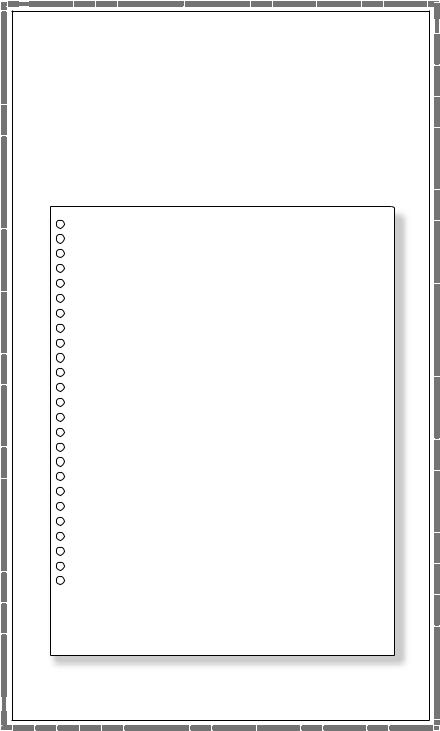
Using the Computer Hardware
This chapter contains the following topics:
Ø Introduction to the computer hardware Ø Information on computer connections
Note: The descriptions in this chapter might be different from what you see on your computer, depending on the computer model and configuration.
User Guide 1
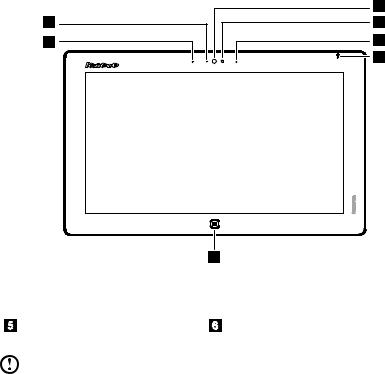
Front view of the computer
2 |
1 |
3 |
4 |
1 |
5 |
|
|
6 |
|
|
Built-in microphone |
|
Camera LED indicator |
|
|
||
|
Built-in camera |
|
Ambient light sensor* |
|
|
||
|
Power LED indicator |
|
Windows button** |
Note: Battery status is displayed in several places in the Windows OS. You will be alerted when the battery starts to run low. Make sure you connect the power supply when you receive an alert.
*Ambient light sensor
The ambient light sensor detects the amount of light in your surroundings. The screen brightness automatically adjusts depending on the ambient light conditions detected by the built-in ambient light sensor.
**Windows button
Press this button to:
•toggle between the current view and the Start screen
or
•wake up the computer from sleep mode
2 User Guide
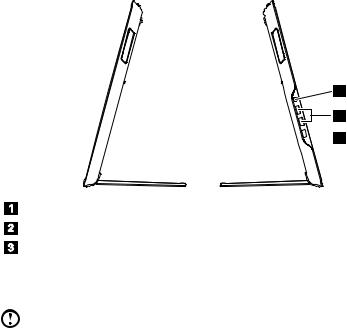
Left and right view of the computer
1
2
 3
3
Combo audio jack*
USB 3.0 connectors (2)
Power connector
* Combo audio jack: Used to connect headsets.
Notes:
•The combo audio jack does not support conventional microphones.
•Different industry standards may lead to the recording function not being supported if third-party headphones or headsets are connected.
User Guide 3
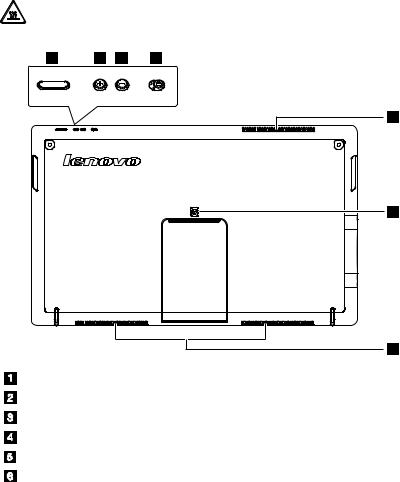
Rear view of the computer
Attention: Be careful not to block any air vents on the computer. Blocked air vents can cause overheating.
1 |
2 |
3 |
4 |
6
5
6
Power button
Volume up
Volume down
Screen rotation lock button*
Stand lock
Air vents
*Screen rotation lock button
Keeps the screen locked in portrait or landscape orientation.
4 User Guide
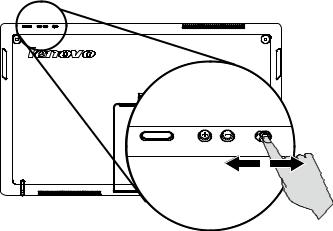
Screen rotation
You can rotate the display panel as you please.
•The orientation of the display automatically changes (alternating between portrait and landscape mode) in response to how you hold the computer.
 Note: Some software does not support screen rotation and will cause the screen to appear abnormal. If this happens, lock the screen to prevent rotation or refrain from rotating the screen.
Note: Some software does not support screen rotation and will cause the screen to appear abnormal. If this happens, lock the screen to prevent rotation or refrain from rotating the screen.
•Use the screen rotation lock button on the top edge of the computer to prevent automatic display rotation. (See illustration below.)
User Guide 5
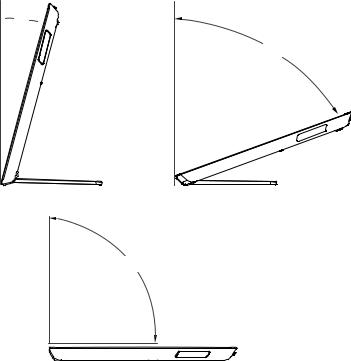
Computer stand
 15º
15º 
70º
90º
1.First open the stand to its maximum angle, then adjust the display position.
2.The computer can be positioned at between 15° and 70° from an upright vertical position, and can also be placed flat down in a horizontal position.
6 User Guide
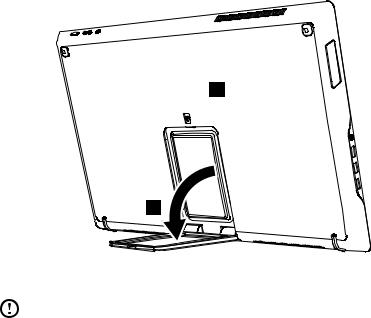
 1
1
2
1.Slide the stand lock and open the stand as shown in the illustration.
2.Open the stand to the maximum angle for a stable position.
Note: You must open the stand to the maximum angle to prevent the stand coming out of position or becoming unstable, which could cause the computer to fall over.
User Guide 7
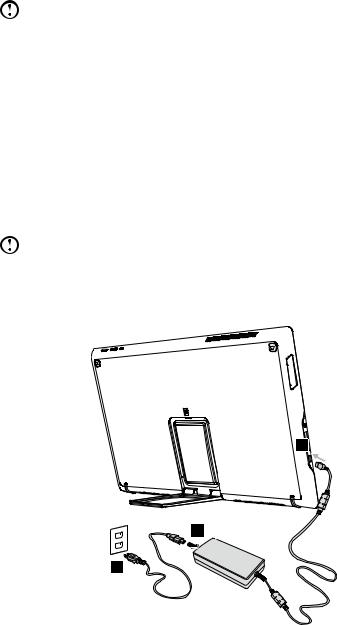
Connecting your computer
Note: Your computer may not have all of the connectors described in this section.
Basic connector instructions
Connector |
Description |
|
|
Microphone |
Use this connector to attach a microphone to your |
|
computer when you want to record sound or if you use |
|
speech-recognition software. |
|
|
Headphone |
Use this connector to attach headphones to your computer |
|
when you want to listen to music or other sounds without |
|
disturbing anyone. |
|
|
USB connector |
Use this connector to attach a device that requires a USB |
|
connection. |
|
|
Note: If your computer is equipped with a wireless keyboard or mouse, follow the installation instructions for those devices.
Connecting the power cord
1
2
3
8 User Guide
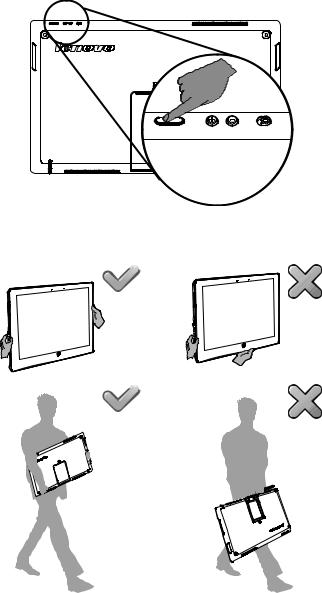
Important information about using the computer
Press the power button on the top of the computer to turn on the computer.
Hold the computer tightly when you carry it.
User Guide 9

Connecting to the Internet
To connect to the Internet, you’ll need a contract with an Internet Service Provider (ISP) and some hardware.
IPSs and ISP offerings vary by country. Contact your ISP for offerings available in your country.
Your computer is designed to support a wireless (selected models only) or wired network that connects your computer to other devices.
Wired network connection
For wired networks, connect one end of an Ethernet cable (purchased separately) to the Ethernet connector on your computer, and then connect the other end to the network router or broadband modem. Consult your ISP for detailed setup instructions.
Note: Broadband modem and router installation procedures vary depending on the manufacturer. Follow the manufacturer’s instructions.
Wireless network connection
For wireless networks, you can use the built-in wireless LAN antenna to access your wireless home network.
To connect your computer to the wireless network:
1.Move the cursor to the top right or bottom right corner of the screen, then click Settings. (If your computer is equipped with touch screen, swipe in from the right edge of the screen, then tap Settings.)
2.Click or tap the network icon  , then select the name of your router. Click or
, then select the name of your router. Click or
tap Connect, then follow the steps on the screen.
Test the wireless network by opening your Web browser and accessing any Web site.
10 User Guide
